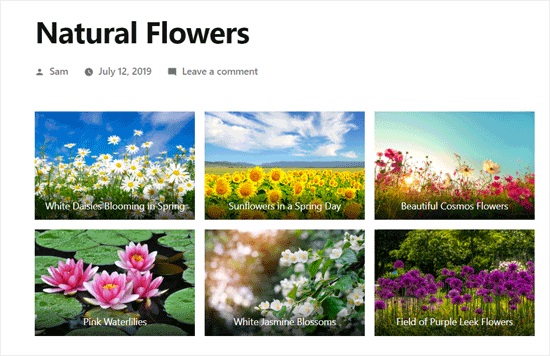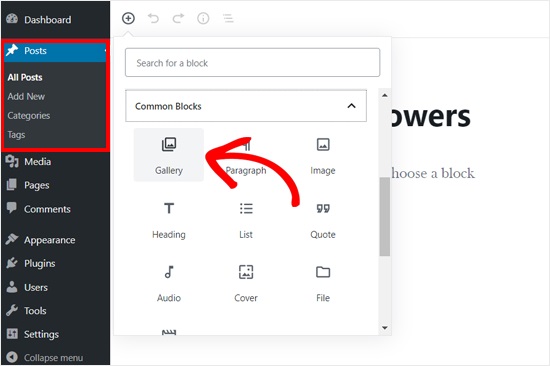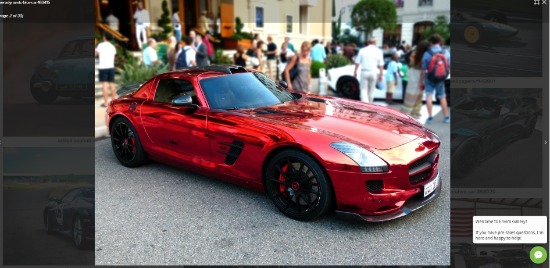A gallery in WordPress is a collection of photographs, illustrations, product images, or videos displayed in a variety of rows and columns.
WordPress comes with a built-in feature allowing users to create beautiful galleries without any technical knowledge.
You can also add more layouts and customizations using gallery specific themes and plugins.

The Default WordPress Gallery
With WordPress, you can choose to insert individual photos, a featured image or create an entire gallery of images. Using the default WordPress gallery is easy.
Our step-by-step guide on how to create an image gallery in WordPress shows you exactly how to create a gallery using images from your WordPress media library without installing a special plugin. While it’s easy to use, it has minimal capabilities and options.

The WordPress gallery will automatically arrange images, but they can be easily reordered using the drag-and-drop feature.

Depending on the theme, there are several alignment options such as align left, center, align right, wide width, and full width. The basic thumbnail layout gives users the option to have their images displayed in up to 8 columns.

Who Should Use A Gallery?
Don’t think photographers are the only ones that should display high-quality photo galleries. There are several popular reasons individuals and businesses of all sizes should use them.
For example, galleries are great for individuals wanting to share their vacation, special event, or family reunion photos on their private blog.
Hobbyists can set up amazing visual exhibits of their latest projects or examples of award-winning entries. Solopreneurs and online store owners can promote their products in an easy to browse and sharable format.
Companies can create slideshows showing their expertise, products, team members, and company-hosted events letting visitors see their “human” side. WordPress makes it easy to add single images to your blog posts and pages.
But, adding multiple images in a post can make it look cluttered. And, visitors will have to keep scrolling down the page to view them all. So, using a gallery makes better use of the space and visitors can quickly and easily browse images.
Also, unlike using single images in a post, galleries allow photos to be displayed in beautiful arrangements. This provides increased visitor engagement, reduces bounce rate, and improves Google rankings.


Why Use a Gallery Plugin
While WordPress comes with its own baked-in gallery option, it’s a good idea to use a WordPress Gallery plugin. The default WordPress gallery is very generic and lacks many important functions like:
- Layouts depend on the WordPress theme being used
- Images aren’t clickable, so they don’t open on a new page
- Galleries can’t be organized by top or tag
- Galleries aren’t saved, so they must be recreated if used again
While a gallery plugin isn’t required, the best way to display your images is by using a plugin proven to handle all the problems listed above and provide even more options.
How To Choose a Gallery Plugin
The two main things to look for in a WordPress gallery plugin are:
- Ease of use
- Speed
Some gallery plugins are difficult to configure, buggy, lack important features and slow WordPress sites to a crawl. This means frustrating configuration issues and lackluster visitor experience.
Look for a gallery plugin that includes important features like:
- Drag-and-drop builder
- Reusable templates
- Mobile responsiveness
- Integration with eCommerce
- Social media integration
- Customizable slideshows
- Supports video galleries
- Password protection
Having features like these will keep images looking great and performing well into the future.
We recommend using Envira Gallery because it’s the best WordPress gallery plugin, and it comes with many powerful features.

There’s also a free version of Envira Gallery that you can use to get started.
Be sure to check out the links below for more information about galleries and plugins.
If you liked this article, then please subscribe to our YouTube Channel for WordPress video tutorials. You can also find us on Twitter and Facebook.




